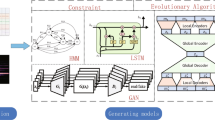Abstract
Music chords are important to enable musical instruments to be played harmonically. Therefore, appropriate chord determination is essential. However, automatic chord determination using only monotonic melodic information is very difficult because chords can be subjectively variable. In this paper, we propose a method for the appropriate basic chord recommendation of melodic lines. The proposed method functions by using the notes feature of each bar based on the theory of harmony. The feature is defined by the pitch and duration of each note. Also, two chords in a bar can be estimated by using bar segmentation policy based on statistical analysis. The experimental results showed that compared with the original songs, an overall accuracy of 92.04 % (81 recommended chords/88 bars) was achieved. Subsequently, the proposed method was applied to our self-composed songs for which chords had not been determined. The results confirmed that the chords derived by our proposed method were fairly harmonious with the songs.





















Similar content being viewed by others
References
Chen C (1969) A theory of bayesian learning systems. IEEE Trans Syst Sci Cybernet 5(1):30–37
Lee K, Slaney M (2008) Acoustic chord transcription and key extraction from audio using key-dependent hmms trained on synthesized audio. IEEE Trans Audio, Speech, Lang Proc 16(2):291–301
Mauch M, Dixon S (2010) Simultaneous estimation of chords and musical context from audio. IEEE Trans Audio Speech Lang Process 18(6):1280–1289
McVicar M, Santos-Rodriguez R, Ni Y, De Bie T (2014) Automatic chord estimation from audio: a review of the state of the art. IEEE/ACM Trans Audio, Speech, Lang Proc 22(2):556–575
Moog RA (1986) MIDI: musical instrument digital interface. J Audio Eng Soc 34(5):394–404
Ni Y, McVicar M, Santos-Rodriguez R, De Bie T (2012) An end-to-end machine learning system for harmonic analysis of music. IEEE Trans Audio Speech Lang Process 20(6):1771–1783
Ni Y, McVicar M, Santos-Rodriguez R, De Bie T (2013) Understanding effects of subjectivity in measuring chord estimation accuracy. IEEE Trans Audio Speech Lang Process 21(12):2607–2615
Park MW, Lee EC (2013) Similarity measurement method between two songs by using the conditional euclidean distance. WSEAS Trans Inf Sci Appl 10(12):381–388
Pauwels J, Martens J, Leman M (2011) Improving the key extraction performance of a simultaneous local key and chord estimation system. IEEE Int Conf Multimed Expo (ICME) 2011:1–6
Rocher T, Robine M, Hanna P, Oudre L (2010) Concurrent Estimation of Chords and Keys from Audio. 11th International Society for Music Information Retrieval Conference (ISMIR 2010). 141–146
Shenoy A, Wang Y (2005) Key, chord, and rhythm tracking of popular music recordings. Comput Music J 29(3):75–86
Zenz V, Rauber A (2007) Automatic Chord Detection Incorporating Beat and Key Detection. IEEE International Conference on Signal Processing and Communications 1175–1178
Acknowledgments
This research was supported by a 2015 Research Grant from Sangmyung University
Author information
Authors and Affiliations
Corresponding author
Rights and permissions
About this article
Cite this article
Lee, E.C., Park, M.W. Music chord recommendation of self composed melodic lines for making instrumental sound. Multimed Tools Appl 76, 17255–17271 (2017). https://doi.org/10.1007/s11042-016-3984-z
Received:
Revised:
Accepted:
Published:
Issue Date:
DOI: https://doi.org/10.1007/s11042-016-3984-z




